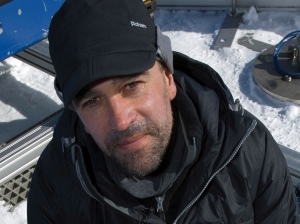What does it take to be a scientific explorer in Antarctica?
Professor Martin Siegert explores some of the last unmapped areas of our planet - the land underneath the Antarctic ice sheet.
Professor Siegert has more than 20 years of experience in Antarctic science and has visited the continent three times on scientific missions, journeying to some of the most remote spots on the planet.

Professor Martin Siegert
His mission, and that of the large team of international collaborators he works with, is to uncover the hidden landscape beneath the vast ice sheet, which can be several kilometres thick. The team use radio-echo sounding to bounce radio waves off the features below the ice and get a picture of the surface.
They can cover large areas by aircraft, but the challenges of exploring Antarctica remain daunting. With no infrastructure, temperatures down below -60 degrees C and only the resources you can carry, any fieldwork is a big operation.
In the video above, Professor Siegert shares pictures of his adventures in Antarctica and explains what he has uncovered and why the work is important, despite the challenges.
Article supporters
Article text (excluding photos or graphics) © Imperial College London.
Photos and graphics subject to third party copyright used with permission or © Imperial College London.
Reporter
Hayley Dunning
Communications Division